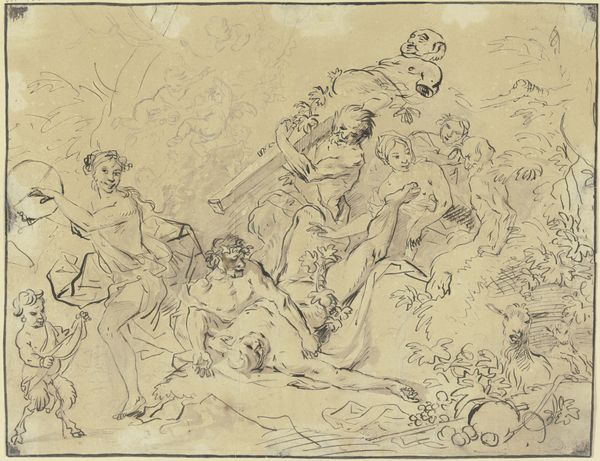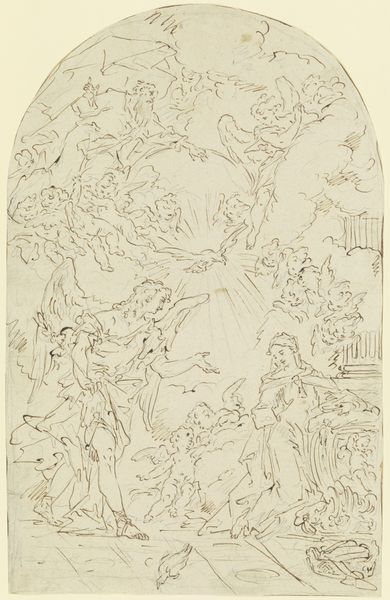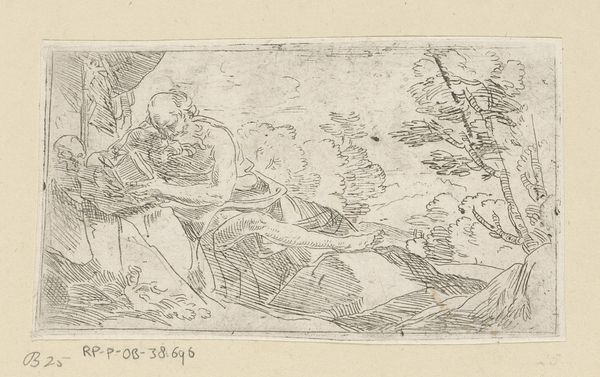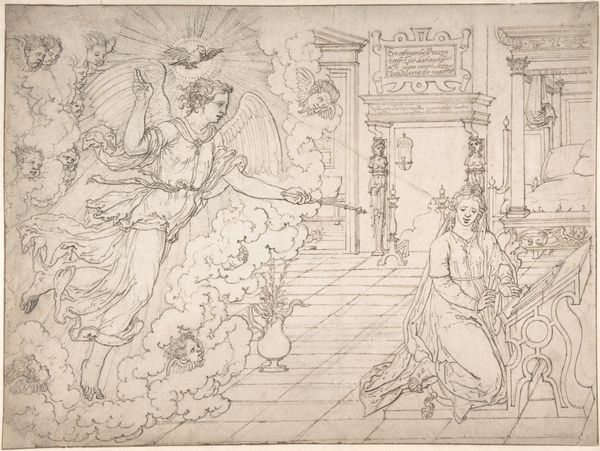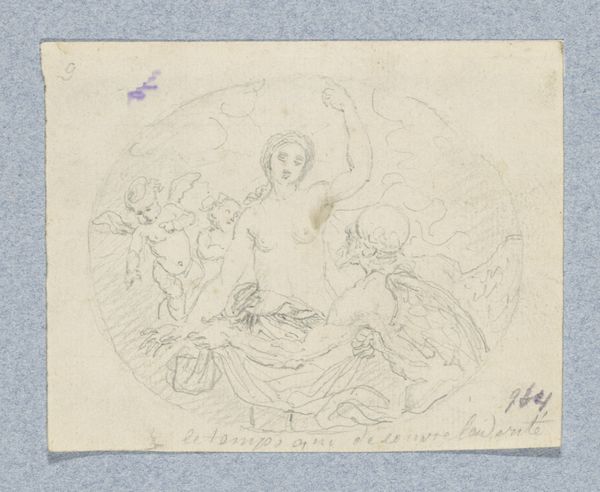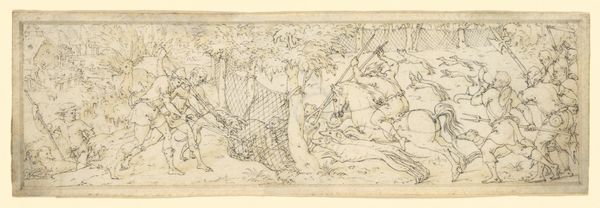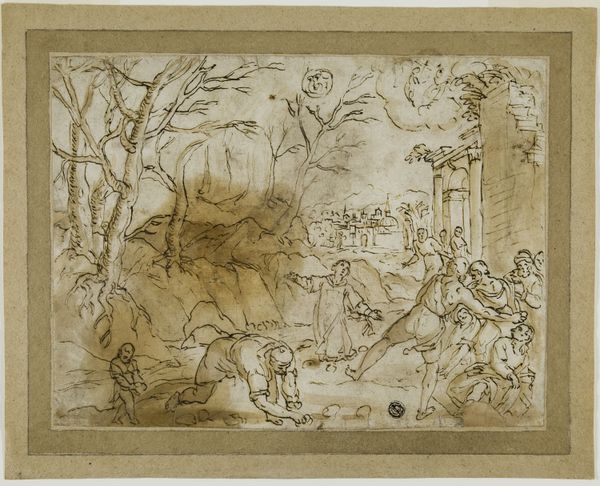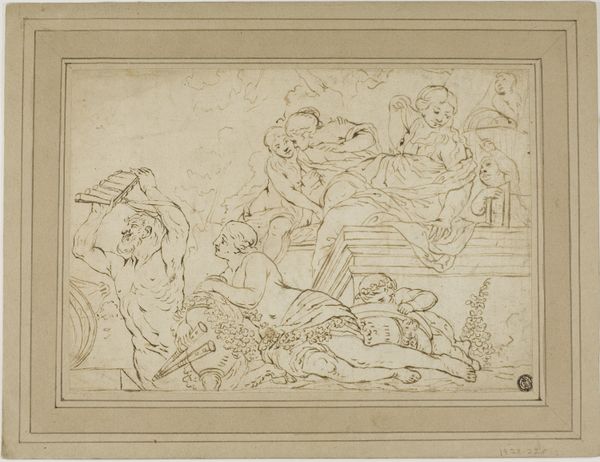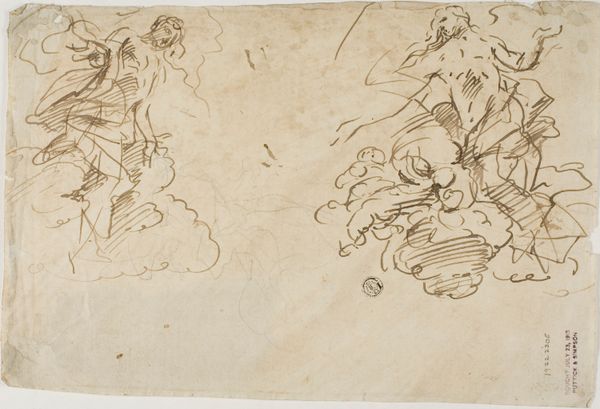
Thetis als smekelinge in de vergadering der goden (in doos met 43 tekeningen) 1703 - 1775
0:00
0:00
louisfabritiusdubourg
Rijksmuseum
drawing, pencil
#
drawing
#
comic strip sketch
#
aged paper
#
allegory
#
sketch book
#
personal journal design
#
11_renaissance
#
personal sketchbook
#
sketchwork
#
journal
#
pencil
#
sketchbook drawing
#
history-painting
#
storyboard and sketchbook work
#
sketchbook art
Dimensions: height 75 mm, width 194 mm, width 135 mm
Copyright: Rijks Museum: Open Domain
Editor: So, this pencil drawing, "Thetis as Suppliant in the Assembly of the Gods," by Louis Fabritius Dubourg, probably made sometime in the 18th century, depicts a scene from classical mythology. It's fascinating how even in this preliminary sketch, the composition feels so grand, almost operatic. What can you tell us about the cultural significance of depicting mythological scenes like this during that time? Curator: Well, in the 18th century, mythological scenes weren’t just about the stories themselves, but also about power. Depicting Thetis pleading before the gods, you're engaging with a long tradition of history painting used to convey moral messages, political allegories, and often, the patron’s own aspirations to grandeur. Dubourg is showing us how these narratives were being actively reimagined, potentially for a specific commission. Editor: Commission? You mean someone might have ordered this? Curator: Absolutely. This drawing could be a preliminary study for a larger work—perhaps a ceiling painting or a tapestry. Think about the context: who would want a scene of a goddess pleading? What kind of statement does that make? Editor: It's like...power dynamics on display? A reminder of hierarchies, even amongst gods and mortals? Curator: Precisely! It also reflects a period of increasing secularism, where classical stories provided a culturally sanctioned way to explore complex human emotions and political realities without directly challenging religious authority. This piece exists within a system of patronage and power. Is this drawing just an interesting depiction of a mythological scene, or something more? Editor: It makes you wonder what statement someone commissioning this wanted to make. That perspective has really reshaped how I view this drawing, thinking of the patron's intentions beyond just the artwork's story. Curator: Exactly. It encourages us to view the artwork not just as an image, but as a point of social and historical engagement. We’ve peeled back the surface to see it reflecting society. Editor: Thank you, that’s a fresh way of understanding the drawing!
Comments
No comments
Be the first to comment and join the conversation on the ultimate creative platform.
